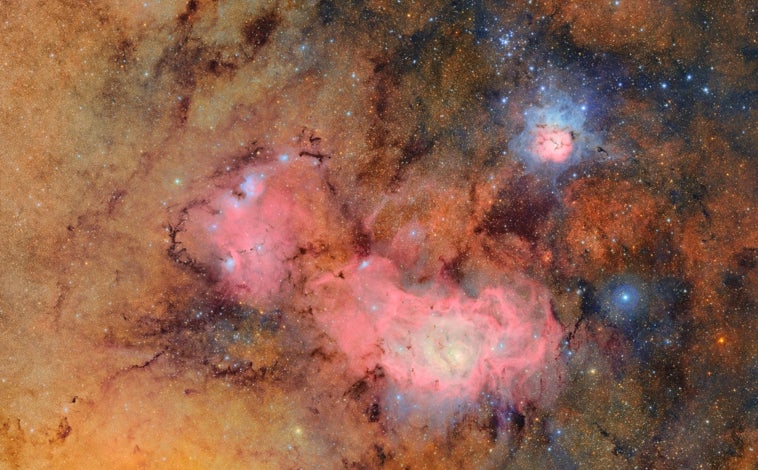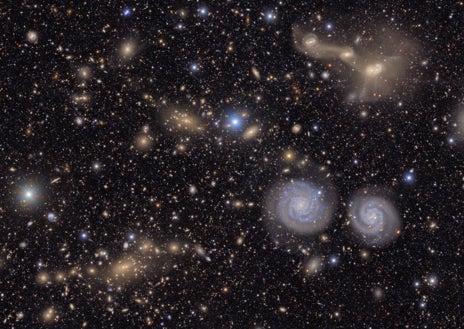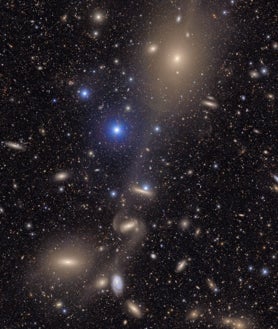The Vera Rubin Observatory reveals the first images of a 10-year 'movie' of the night sky.

It's just a taste of what's to come, but the Vera Rubin Observatory has already demonstrated its potential to reveal the sky as we've never seen it before. This Monday, it revealed its first images of the universe (the "first light" of an instrument, as astronomers call it), which are the beginning of a time-lapse that will be completed after mapping the southern sky for a decade. It's like a movie of what will happen in the sky over the next ten years, which will allow us to learn more about the elusive dark matter, catalog the Solar System, and uncover the structure and history of our galaxy.
Nicknamed by many as the "Ferrari of observatories" and located on Cerro Chile in the Chilean Andes, the Vera Rubin Observatory is ideally located for astronomical observation due to its height, dryness, and darkness. The observatory's camera, with its 8.4-meter mirror, is the largest ever built for astronomy and will allow scientists to capture never-before-seen details of the cosmos.
Its main objectives are to understand dark energy and matter—not in vain its name pays tribute to astronomer Vera Rubin , whose contributions were key to discovering these elusive phenomena—to catalog the solar system by observing millions of asteroids and comets, to explore the transient sky, and to map the Milky Way to discover the structure and history of our galaxy. All to create the most comprehensive cartography of the sky, or Legacy Survey of Space and Time (LSST).



Among the many experts contributing to this mission are researchers from ICE-CSIC and IEEC, who have played a key role in the scientific and technical development of the ambitious Rubin Observatory project. Specifically, these researchers will lead observations with the Gran Telescopio Canarias (GTC), a 10.4-meter diameter telescope located at the Roque de los Muchachos Observatory on the island of La Palma, for the spectroscopic follow-up of transient objects discovered by the LSST survey.
"This is the first time that a telescope with such a large aperture, measuring more than eight meters in diameter, has been used entirely to scan the sky for ten years. In addition to producing a dynamic movie of the entire southern sky over that decade, it will allow all the images to be combined to detect the faintest objects ever observed from Earth. For the study of the transient universe, this means having the most precise and productive machine for discovering supernovae and other stellar explosions, with more than one hundred thousand alerts of new objects every night," comments Lluís Galbany, a researcher at ICE-CSIC and IEEC.
"The LSST mapping, which will be carried out at the Vera Rubin Observatory, will allow us to discover the nature of dark matter and characterize the evolution of dark energy. It is an extraordinary opportunity to increase our knowledge of the fundamental physics associated with the most pressing problems in cosmology," says Juan García-Bellido, cosmologist and researcher at the IFT-UAM/CSIC.
"Seeing the first images from LSST is incredibly exciting, and this is just the beginning. We're seeing the first frames of a decade-long movie of the Universe that will change the way we study the cosmos," said Jorge Carretero, PIC's cosmology project scientist and data support scientist.
The PIC team, operated through a collaborative agreement between CIEMAT and IFAE, is implementing an Independent Data Access Center (IDAC) powered by CosmoHub, which offers the scientific community a powerful and easy-to-use portal to explore and analyze the vast amount of data produced by the telescope.
"The Rubin Observatory marks a turning point in astronomy. We will no longer depend on luck to observe supernovae, detect new asteroids, or variability in starlight. Its way of observing the sky will allow us to track any change with precision and consistency without relying on chance," says Laura Toribio San Cipriano, a researcher in the CIEMAT cosmology group.
ABC.es





